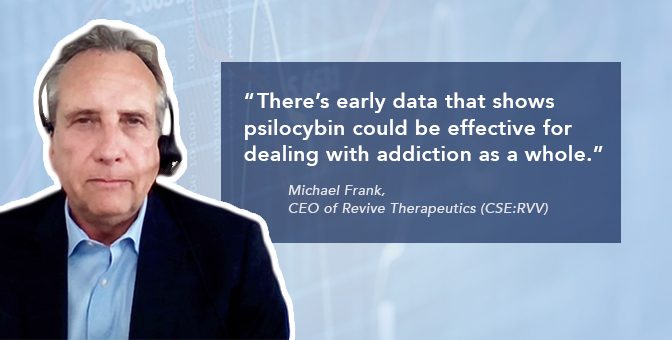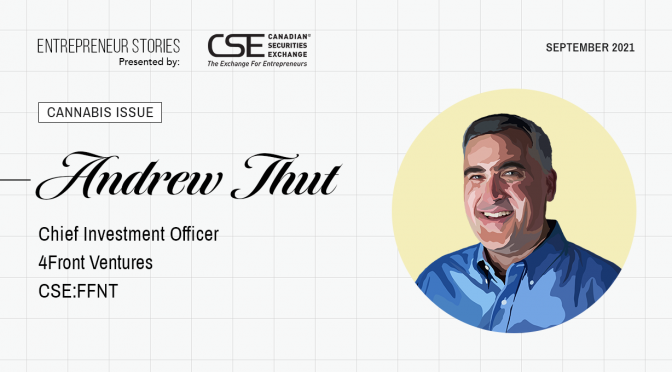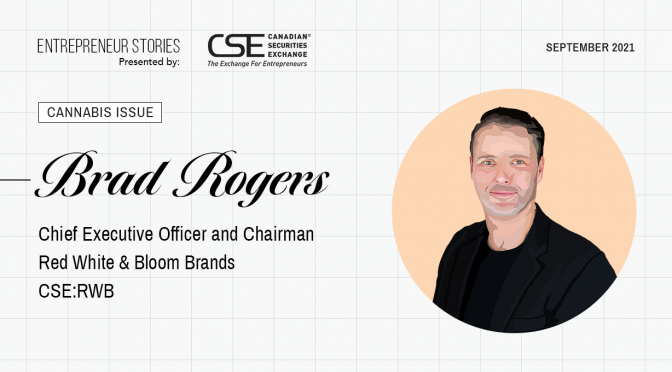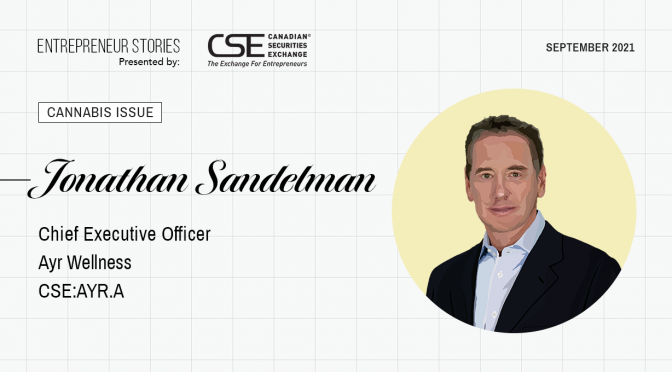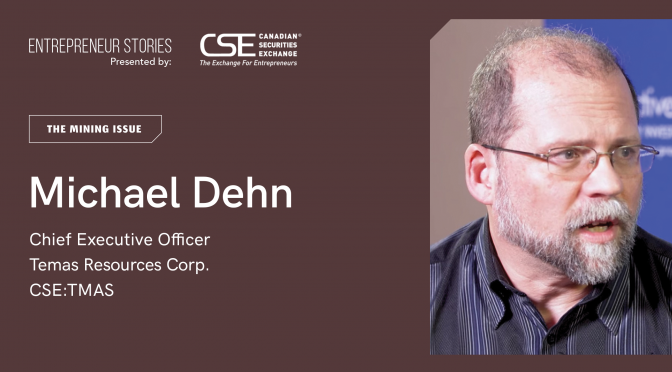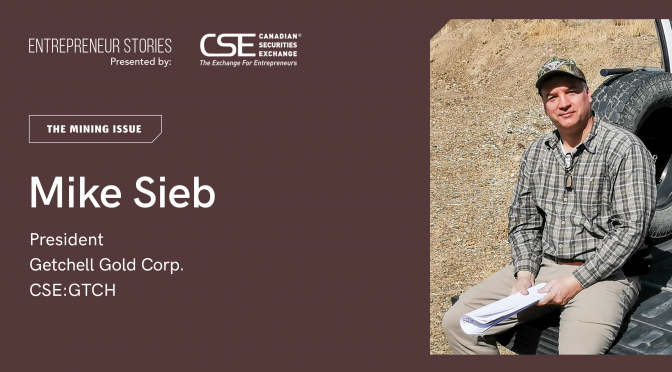Revive Therapeutics (CSE:RVV) is in the spotlight these days for good reason, thanks to a portfolio of prized intellectual property in the psychedelics field, as well as a COVID-19 drug candidate.
In March of last year, Revive acquired Psilocin Pharma for its psilocybin-based IP and treatments. Psilocin founder Derrick Welsh now spearheads Revive’s psychedelics division.
Revive further boosted its pipeline through an exclusive license with the Puerto Rico Science, Technology and Research Trust to advance medicinal mushroom Ganoderma lucidum compounds to help cancer patients.
On the COVID-19 front, Revive is evaluating rheumatoid arthritis drug Bucillamine as a potential treatment for inflammation caused by COVID-19.
We recently caught up with Revive Chief Executive Officer Michael Frank to talk about the company’s strategy for building a valuable drug pipeline and patent portfolio.
Revive is working on solutions for quite a varied range of patient needs. Why is the company’s work a compelling story for investors?
Revive has a strong platform in two areas targeting rare disorders and infectious diseases. The FDA has approved a Phase 3 trial for Bucillamine aimed at COVID-19, which is a tremendous milestone for us. We’ve also got a strong portfolio around psychedelics, and we are working with a lot of US universities, so we have two best-of-breed platforms. We’re developing novel psilocybin and cannabidiol therapeutics and have a patent portfolio covering methods and compositions of drugs.
The Psilocin Pharma acquisition has galvanized Revive’s move into psychedelics. What psilocybin treatments are you moving down the clinical path?
We acquired Psilocin from its founder over a year ago. We took our delivery systems in cannabis and transcended them to psychedelics. Psilocin Pharma has IP covering methods of production of psilocybin formulations, and we want to take it down the clinical path by developing products around breath strips, lozenges, and sprays.
We’re working with US universities on preclinical/clinical studies that aim to channel psilocybin in various formulations and delivery methods to treat mental health, substance use disorders, methamphetamine addiction, and neurological disorders. We’re partnering with the University of Wisconsin to conduct a Phase 1/2 clinical study to evaluate psilocybin in adults with methamphetamine use disorder and traumatic brain injury (TBI)/stroke.
We’re also working with the University of Health Sciences Antigua on our tannin chitosan drug delivery technology to deliver psychedelics in an oral thin film patch in human clinical studies to support regulatory approvals globally. We’ve developed a hydrogel that’s going to be used for dosing patients in Antigua. Revive will be one of the companies to have a psilocybin product that’s going to be taken by patients – in the next four to five months – to treat mental health and substance use disorders.
The University of Wisconsin has done the early stages of our formulation work and now have to move it along the clinical path with partners like LTS. The university has done a lot of work on opioid addiction and other areas, but these are Phase 1/2 clinical trials aimed at methamphetamine addiction and TBI/stroke. Enrollment will continue throughout Q1 2022, and we will have access to IP from the two studies. There’s early data that shows psilocybin could be effective for dealing with addiction as a whole.
What is driving Revive to look at psilocybin as a solution to managing TBI and stroke?
We have data from our initial trial at the University of Health Sciences National Health Research Institutes. In the mouse model study, we saw favourable results in one group of mice, and the study signalled the neuro-reparative effect of psilocybin.
The mice were assigned to four groups, which included the control group and the mice with TBI who were given psilocybin. Cognitive function was examined by the Morris water maze test. It found psilocybin, given after injury, improved cognitive function in TBI mice.
Since the mice with concussions, who had high-dose psilocybin, did really well, we’re using the data to push forward with brain injury studies and an FDA clinical study at the University of Wisconsin-Madison with patient enrollment. It’s early stage, but we’re working with incredible universities to build the science. This is important work because millions of children with hockey, football, and other sports concussions end up with brain fog and a multitude of other symptoms.
How are your psilocybin oral thin film strip development and psilocybin biosynthesis programs progressing?
The programs are progressing nicely. Our work with LTS Lohmann on oral thin film formulation is a unique opportunity – they are a one-stop shop for us. They are going to take the product, put it through testing, and by the end of it, we’re going to have data to support our claim for a pre-Investigational New Drug (IND) and IND.
With the North Carolina State University collaboration, Revive is developing a biosynthetic version of psilocybin based on a natural biosynthesis enzymatic platform. It’s been developed by Dr. Gavin Williams at NC State for producing psilocybin efficiently using an engineered enzymatic pathway in E. coli.
Turning E. coli bacteria into a microbial factory for producing chemotherapy drugs has been successful. Vitamins also use E. coli or a yeast model. We’re looking to produce artificial biosynthetic psilocybin using the same E. coli pathway, but it won’t be exactly the same. We’re waiting on the Drug Enforcement Administration to permit us to go to the next step.
Psilocybin is expensive; there’s limited supply, so companies will need synthetic options. At the end of our synthesis process, we are hoping to be able to provide the active pharmaceutical ingredients (APIs) for our own products. We’ll have a powertrain that can not only supply our own API, but build a great synthesis platform that will lend itself to mental health and addiction.
Let’s conclude with your work regarding Bucillamine as a treatment for lung inflammation in patients with mild-to-moderate COVID-19.
Our double-blind, placebo-controlled Phase 3 clinical trial for Bucillamine for COVID-19 is based on 1,000 patients and up to 50 sites in the US. We are adding viral load testing to support work done by the University of California, San Francisco for a minimum of 300 patients in this 1,000 person study.
Bucillamine has a well-known safety profile – it’s been prescribed for rheumatoid arthritis in Japan and South Korea for 30 years. We’ve also successfully finished a Phase 2a FDA clinical trial of Bucillamine for gout back in 2015.
In late summer 2020, when we applied for a Phase 2 trial for COVID-19, we were fast-tracked by the FDA and asked to prepare an IND for a Phase 3 confirmatory trial for COVID-19 because of our gout study and the history and safety of Bucillamine.
Learn more about Revive Therapeutics at https://revivethera.com/

